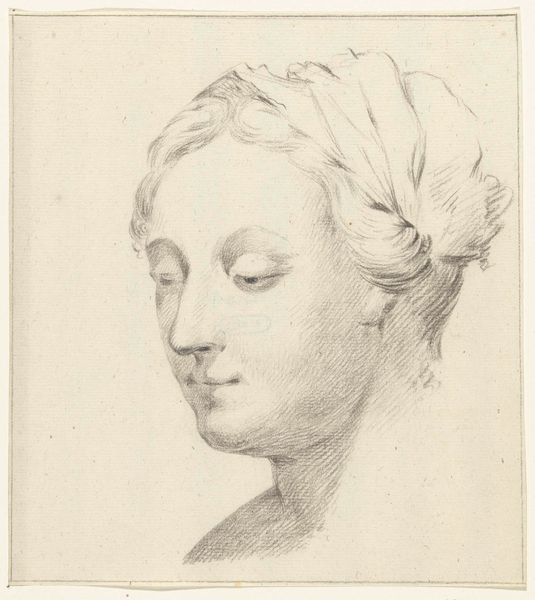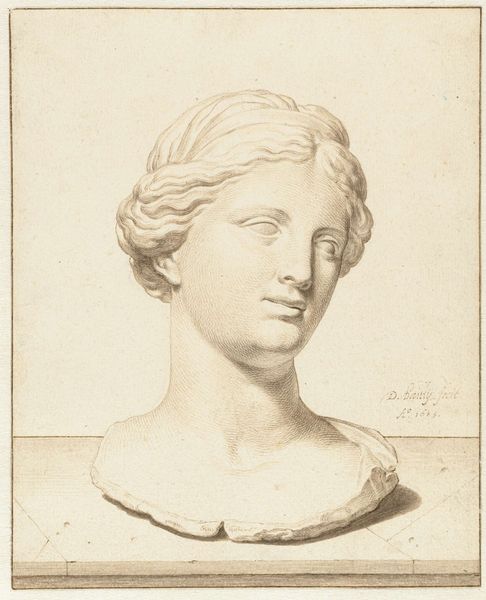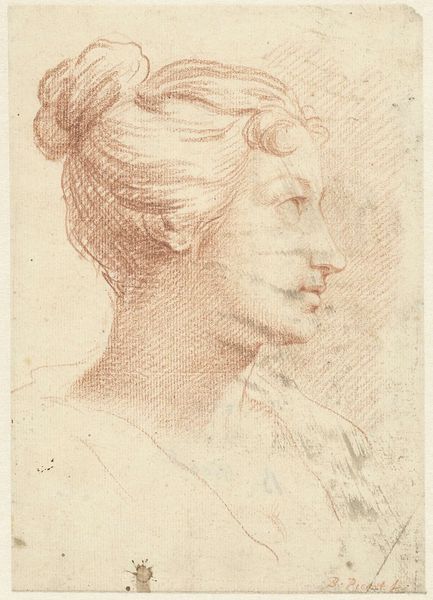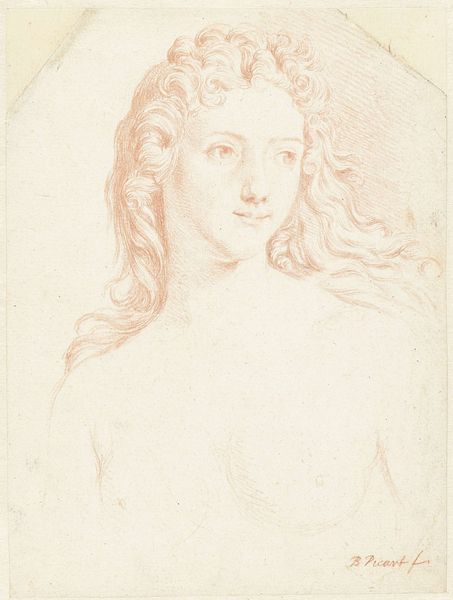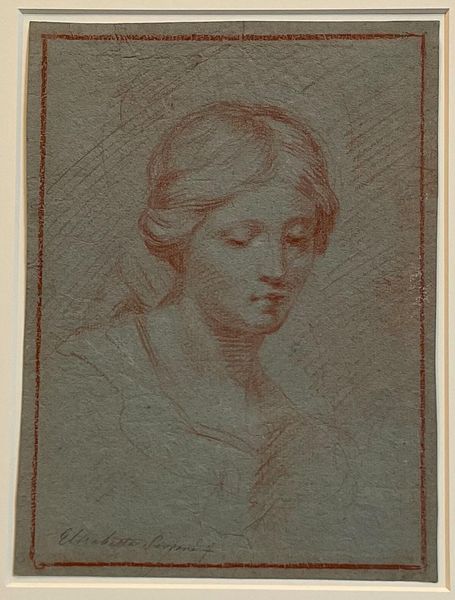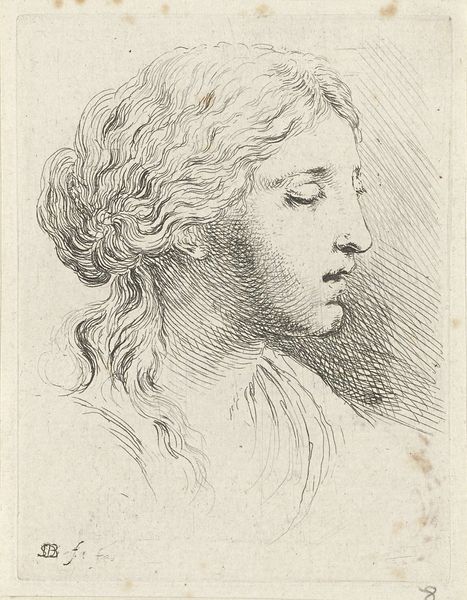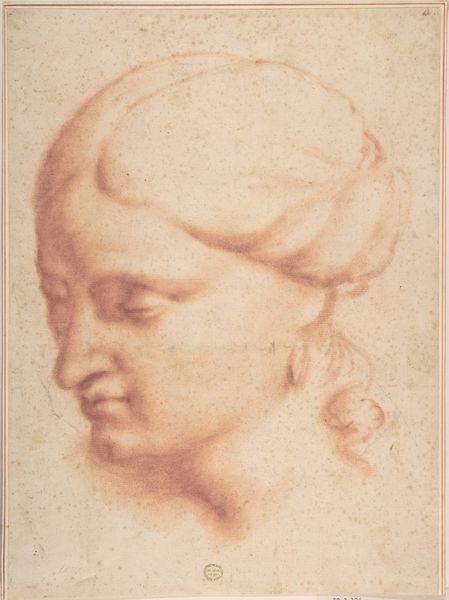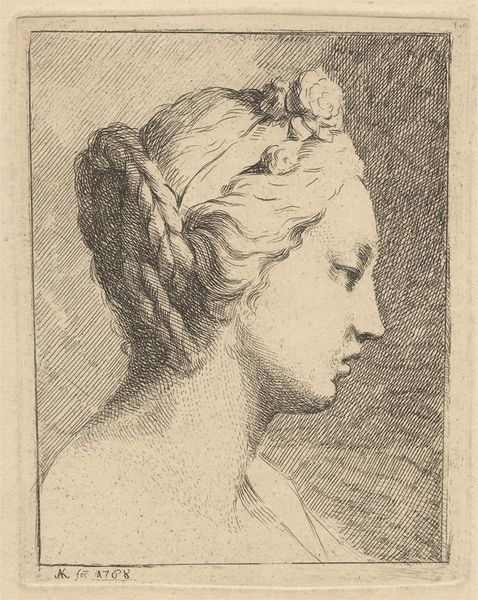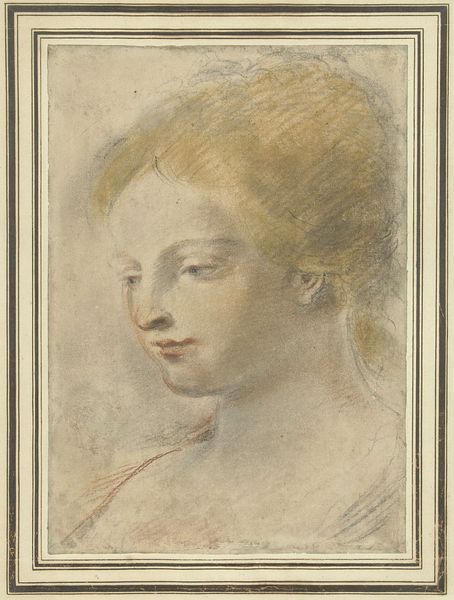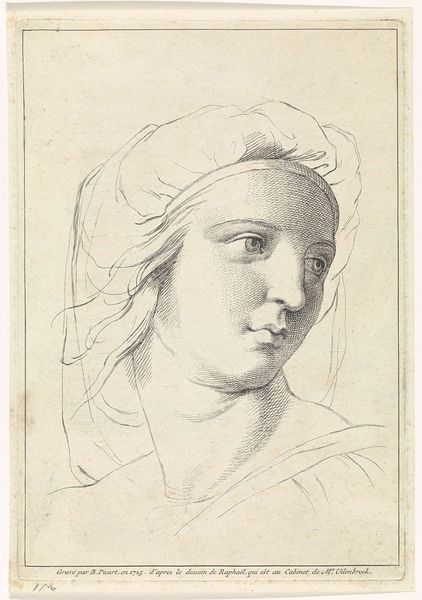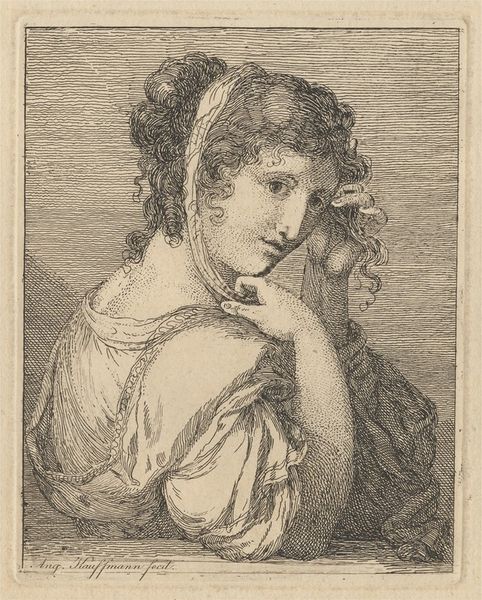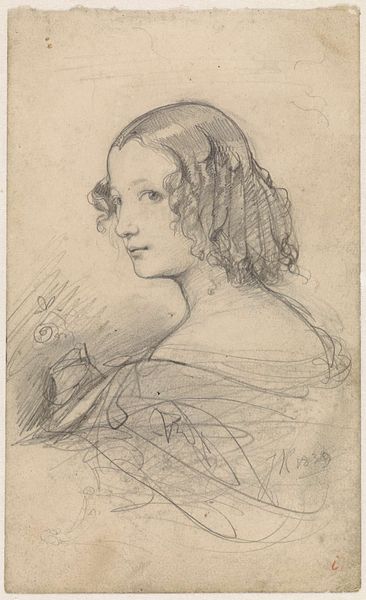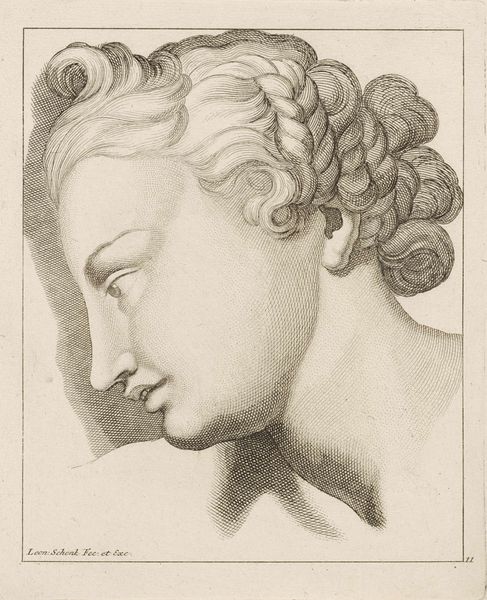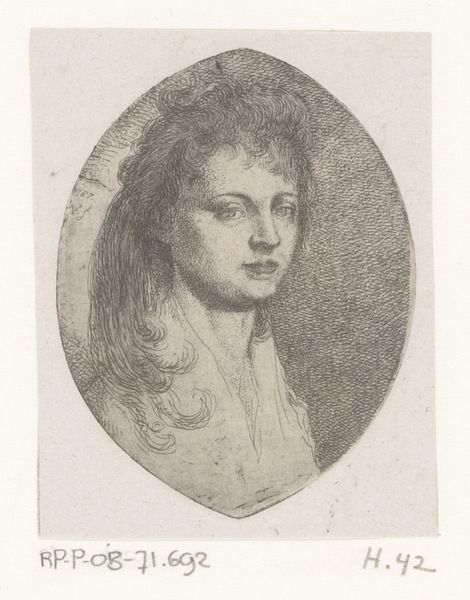
drawing, pen
#
portrait
#
pencil drawn
#
drawing
#
facial expression drawing
#
light pencil work
#
baroque
#
pencil sketch
#
portrait reference
#
pencil drawing
#
animal drawing portrait
#
pen
#
portrait drawing
#
pencil work
#
portrait art
Dimensions: height 276 mm, width 186 mm
Copyright: Rijks Museum: Open Domain
Curator: This delicate drawing is titled "Head of a Graying Woman with Her Hair Up," created around 1712 by Bernard Picart. It's currently held in the collection of the Rijksmuseum. Editor: My first thought is how cleverly the artist captured a mood. There’s a soft melancholy about her; she looks thoughtful, perhaps even amused by a private joke. Curator: It's executed in a sanguine conte crayon, lending a warmth that contrasts with the title. Picart was a prolific engraver, but drawings like this show another dimension of his talent, one that feels less formal and more intimate. She’s not a queen, is she? Editor: Probably not royalty, but I do wonder about the sitter's social position in the 18th century. The Baroque era was marked by its excesses and its rigidity of the norms about femininity. You have an elite woman gazing, not forward, but slightly askance; seemingly at something she considers interesting, perhaps dubious even? A slight disruption in her demeanor which disrupts her class at large. Curator: The economy of the line is incredible too. Notice how much expression he coaxes from just a few strokes around the eyes and mouth. It's a masterclass in suggestion, really leaving room for our imagination. You feel the presence of the person but are allowed to project an element of what we know or think we know to her. That slight smile could also be sadness if you see things a certain way, right? Editor: Exactly! The ambiguity invites us to consider the constraints placed upon women of the era. Picart hints at an interiority that likely exceeded societal expectations. What would it have been like to be the sitter in the artist's drawing? I bet more was going on inside that head, coiffed though it may be, than anybody gave her credit for. The image could be retitled to capture some of this buried power; ‘the matriarch with a plan' or similar. Curator: A fine title, actually! It brings a fresh way of considering a classic composition like a portrait. For me, what really sings, and persists with me afterwards is how the artist can catch somebody's being in a particular moment in time - her character. What do you take from her character? Editor: I come away considering all the overlooked narratives simmering just below the surface. Art like this reminds me to look closer at the nuances of identity and history.
Comments
No comments
Be the first to comment and join the conversation on the ultimate creative platform.
